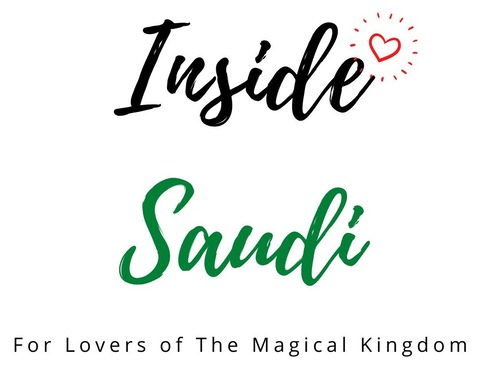Listed below are 15 of the most compelling reasons why you should visit Umluj this amazing seaside resort.
- Turquoise Waters
- Cotton Candy Sands
- Stunning Coral Reefs
- An Abundance of Sea Life
- Excellent Year Round Weather
- Impressive Volcanoes and Lava Fields
- Dramatic Canyons and Mountain Ranges
- Ancient Archaeological Treasures
- Vast Nature Reserves
- Amazing Migratory Birds
- Health Benefits
- Sustainable Tourism Untouched Beauty
- Very Safe for You and Your Family
- Low-Cost Destinations
- Accessible and Well Connected
Saudi Arabia has never really been a tourist destination. Sure there are tourists. These are the 15,000,000 people who visit the country each year for religious reasons and for personal visits. This, of course, is a huge source of income for the Saudi government.
So far, none has come for package holidays nor on tourist visas. But that is all about to change. The kingdom has huge development plans which include a spanking new Red Sea Resort, ‘Noem’ Mega City, Al Qiddiyah the Entertainment City in Riyadh and lots more.
The reasons are clear. It is a way to keep money inside the kingdom by encouraging Saudis nationals to holiday at home and to attract outside investment and foreign spending opportunities for a further 15,000,000 more foreign tourists.
Umluj (pronounced Umlooj) is a small town in the northwest of Saudi Arabia 150 km north of Yanbu and right next to the Red Sea.
It is a veritable paradise for nature lovers, adventurous outdoor types and those interested in health, wellness and having unusual cultural experiences.
So, listed here are 15 of the most compelling reasons why you should visit Umluj.
1. Turquoise Waters
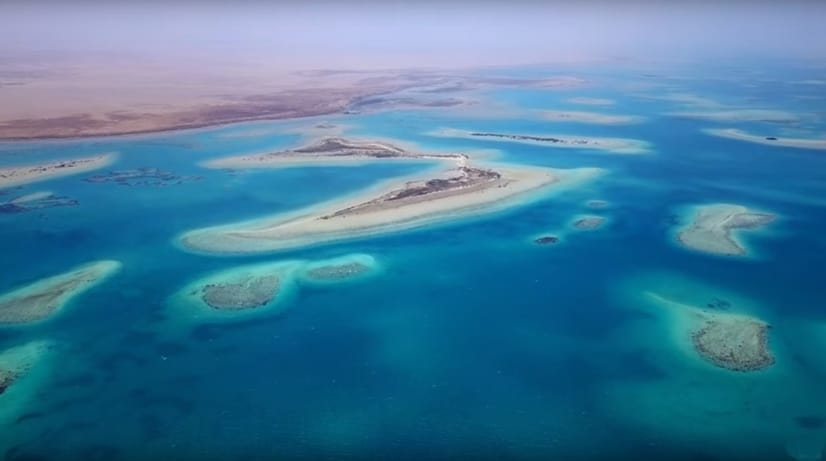
Visitors are often amazed to see that the sea in ‘Umluj’ is beautifully clear, turquoise blue. They say also that it is warm, clean, pristine and unpolluted. The exceptional clarity is due to the fact of almost non-existent river discharge and rainfall that normally brings dirt and debris to the sea.
In fact, sea waters here are unique in that exchanges between other bodies of water i.e. rivers and lakes etc are very minimal and restricted to only limited laval exchanges between the seas of the Indo Pacific.
Imagine you and your family running about or diving off a boat into those clear blue waters and stepping out onto the white cotton sand underfoot and watching the incredible sea life.
2. Cotton Candy Sands
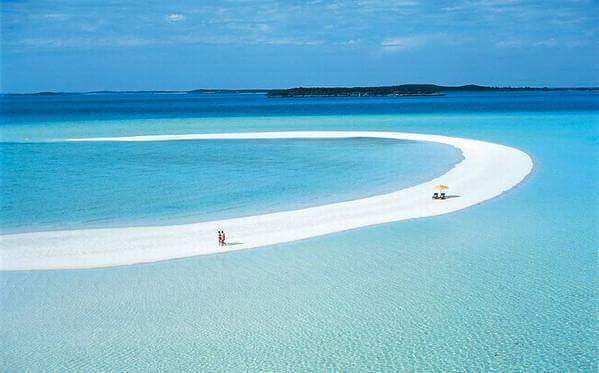
The sand is cotton white, fluffy and very soft to the touch. This is perfect for people just wanting to laze comfortably next to the sea, running about barefooted or just splashing around in its peaceful, shallow waters.

The kilometres of soft beaches are lined by tropical palm trees fed by the natural springs offering cool shade and protection from the elements. The springs that feed these trees lie slightly north in the areas of ‘Koff’ located between the mountain range and the sea.
The most popular beaches in Umluj are Ras Al-Shaaban and Doqm and they are full of palm trees.
3. Stunning Coral Reefs
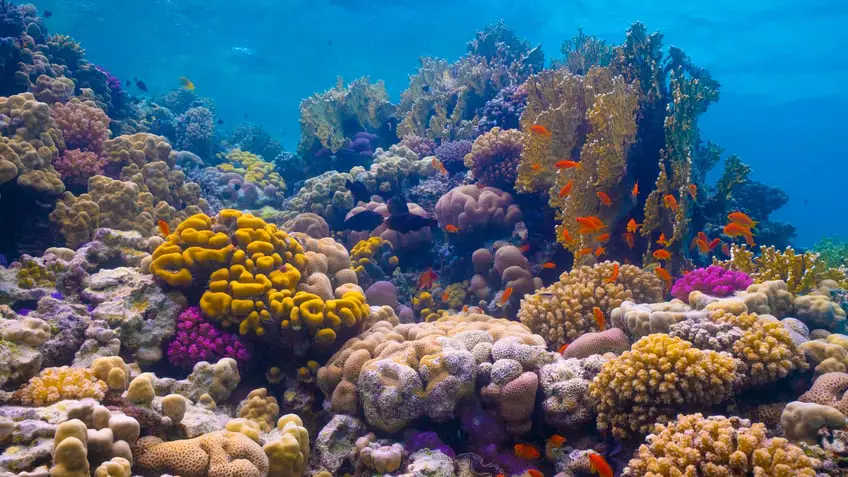
The vast white sand plains that lie in the shallow submarine shelf like waters off the mainland and the islands are great for swimming, diving, having all out fun.
Adventure lovers can hire boats (400 SR for 3 hours) and go out to the nearest islands (Jabal Hassan) with snorkel and flippers explore some of the vast expanses of coral reefs that lie beneath the surface.
Coral lovers can dive off boats and with their snorkels explore the fringing reefs- the most extensive of all reefs- which grow directly out from the Red Sea shoreline. The most common type of coral to be found there is the high branched species called ‘Acropapra’ and ‘Porites’.
The offshore reefs vary in types but include atoll ring coral (not barrier reefs) which are coral towers arising out of the sea depths with curious shapes and patterns. These were caused by the millennia of clashing of the tectonic plates under the sea bed.
Under the water, you can see more than 300 hard coral species in the Red Sea which is about four times the amount found in Caribbean reefs. The diversity and colour of corals recorded here compare favourably with those in the Indian Ocean such as the reefs in the Maldives and Seychelles.
4. An Abundance of Sea Life
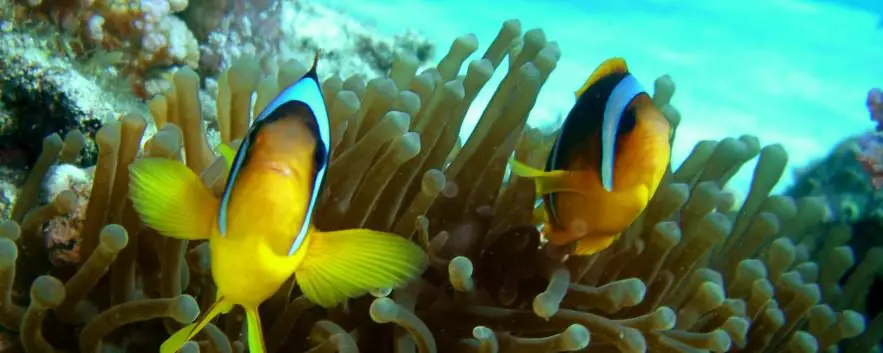
Visitors are blown away by the variety and amount of sea life they see when diving or snorkelling in ‘Umluj’. There are more than 1,200 fish species, 10% of which can only be seen in the Red Sea. They can be characterized by:
- Shape
- Colour
- Mouth and Teeth
- Feeding Strategy
Shape-Most coral reef fish are thin and pancaked shaped. This helps them make quick turns and stops in and out of the coral reefs. Their pectoral and pelvic fins are orientated on their bodies to help them achieve this.
Colour– Unlike most fish in general, fish species found in the ‘Umluj’ are spectacularly colourful. They usually display bold, striking patterns of colour on their bodies.
As I was snorkelling in the Red Sea, I was truly amazed by the electric blues and yellows, by the quantity and variety of colourful fish I witnessed. I had never seen colours quite like them on land in ‘real’ life and I found it so absorbing, so much so that I didn’t want to get out of water.
Mouth and Teeth- The shape teeth and mouth (the feeding apparatus) depend on feeding habits. There is so much life and a great potential food resource in the Red Sea. When you see fish with beak-like shaped mouths (e.g. Parrot Fish) know that they are herbivores, excellently adapted for scraping microalgae off of the coral colonies.
Other herbivorous fish (i.e. Surgeonfish) have little mouths with loads of small teeth designed to cut and gobble macroalgae.
The more generalized terminal mouthed fish varieties are predatory and carnivorous. (i.e. Snappers and Grunts). Their mouths are teeth are so shaped with teeth at the back to allow them to pounce on and feed off other small fish and invertebrates.
Turtles
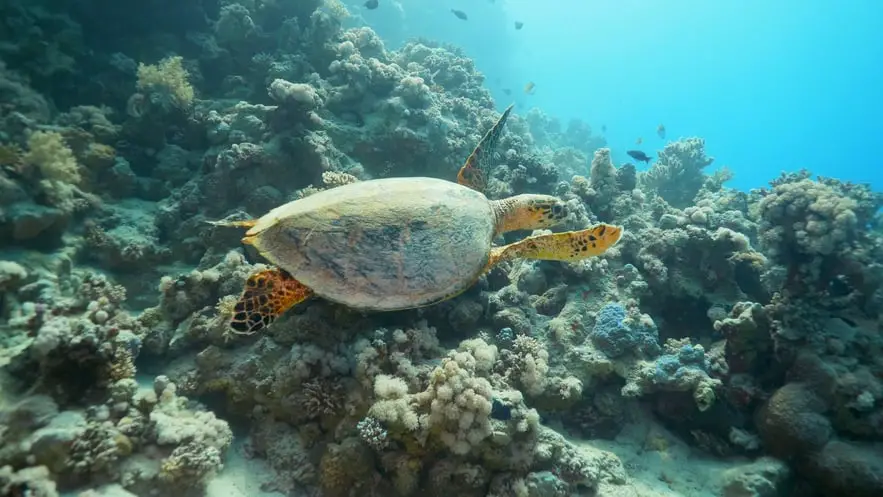
Marine turtles are a common sight in and around the 102 islands of ‘Umluj”. There are five species to be seen:
- Green Turtle
- Hawksbill Turtle
- Loggerhead Turtle
- Ridley Turtle
The most common is the Green and Hawksbill. The Green turtle has a large tear shaped back, paddle-like flippers, is light coloured and feeds (herbivore) on seagrasses in shallow lagoons.
The Hawksbill is related to the Green turtle is distinguishable by its sharp curving beak, serrated knife shaped back and grows to about 1 metre in length.
Turtles migrate long distances between feeding grounds and the females use island beaches to dig out nests in the sand and lay their eggs during the night. Hatchling turtles later break out and head back to the sea. Turtles can live up to 80 years.
Today, the Green Turtle is listed as an ‘Endangered’ Species due to over-collection of its eggs, rising temperatures, being caught in fishing nets and sea pollution. The Hawksbill is a ‘Critically Endangered’ Species.
Real estate development, oil spills, metal and chemical pollution is causing serious habitat loss and destruction of essential nesting sites which has resulted in a serious decline in turtle populations.
Dugongs
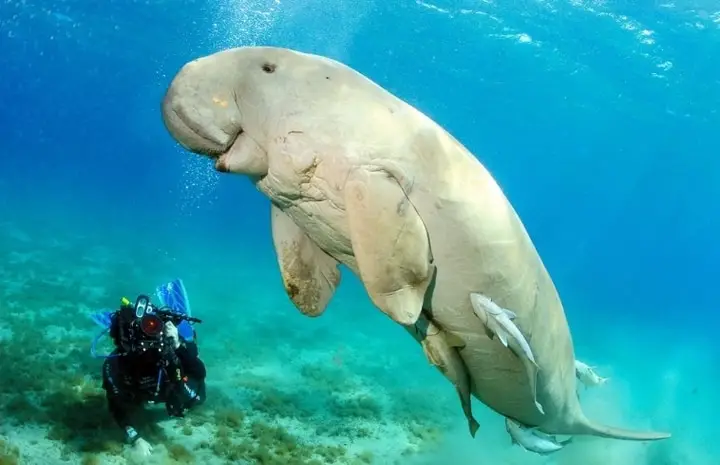
A Dugong is a cow like a marine animal that populates the shorelines of the Red Sea. It lives in warm waters on seagrass meadows in wide, shallow protected bay areas such as mangroves channels and inshore islands.
The Dugong is a common sight in and around the 104 islands of ‘Umluj”.
They prefer shallow waters because they can only hold their breath for two to four minutes under the water. When diving down they rarely go lower than a couple of meters. Dugongs can live up 50 years. The oldest known Dugong lived for 73 years.
Traditionally, this mammal was hunted for its meat and oil. As expected, populations around the world have depleted and in some cases to almost extinction.
The Red Sea population of Dugong was guessed to have been around 4,000 thirty years ago. Today, the numbers are considerably less. Because of this snorkellers and divers get very excited to see them in Umluj.
5. Excellent Year Round Weather
Any time is a good time to visit ‘Umluj’ since it is still always quiet, peaceful and until today underexploited. However, you will feel most comfortable if you plan a visit between January and June.
| July-September | 102°F/40°C | (Hottest) |
| April-June | Day time-100°F/37.5°C Night time- 58°F/14°C | ( Hot) |
| January-March | Day time-90°F/32°C Night time- 56°F/13°C | (Warm) |
There is only 1 inch of rainfall per year usually in April and late autumn.
So in an arid climate, there is lots of year-round sunshine, very little rain and the dry heat is moderated by the Red Sea. Temperatures fall at night and the evenings are generally cool.
6. Impressive Volcanoes and Lava Fields
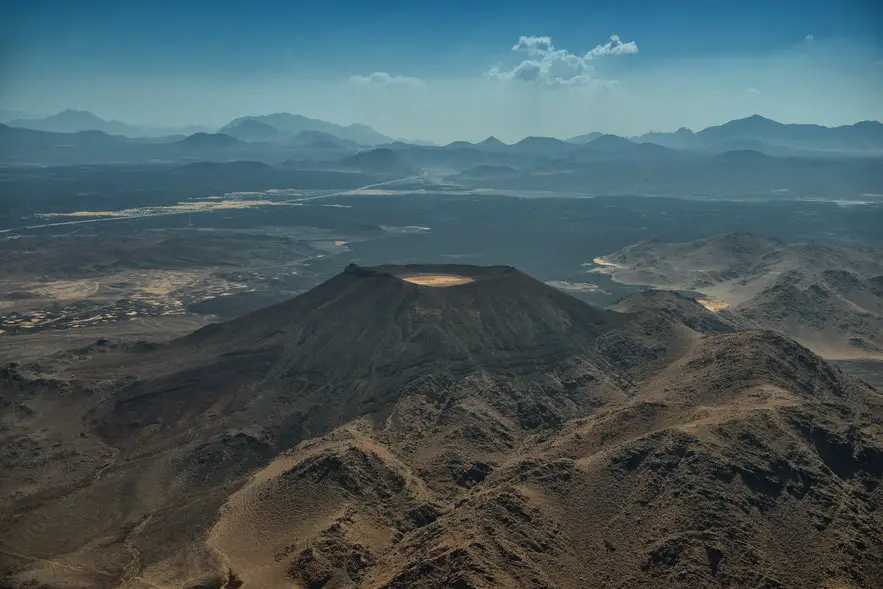
No holiday in Umluj would be complete without a day out to Harrat Lunayyir a supposedly dormant volcano and to the lava fields in the Harrat (black volcanic rocks) Khyber region.
Another one affectionately known as Jabal Abiyadh, (White Mountain in English) is Saudi Arabia’s tallest volcano at 2,093 m (6,867 ft) and is about a two-hour drive north of Umluj.
Close by is the sister volcano Jabal Bayda (White sister mountain) at 1,913m high.
Two kilometres north is another called Jabal Qidr 2,022m high. Dramatic lunar-like landscapes of ancient and more recent lava flows can be seen in a 14000 square metre area between Hail and the north side of Al Madinah. It is a long line of volcanic vents stretching 100 km north-south with scoria cones, lava domes, maars, and basalt lava flows near Jabal Qidr.
Visitors can see amazing patterns in the mixture of red, white and ochre-coloured lava between huge craters. Tourists love to walk the path to the place where the creamy white lava of Jabal Bayda meets deep dark lava flows of Jabal Qidr.
They take souvenir photos as they stand on this volcanic border placing each foot astride the two lava types. It is not easy to get to but well worth the ride out.
If you are a tourist or a visitor and wish to know more about all the 10 major volcanoes (harrats) in Saudi Arabia and how exactly you can get to them click the following link.
I spent hours compiling this information since it was not available anywhere else online. The post contains a wealth of volcano information and 11 videos.
7. Dramatic Canyons and Mountain Ranges
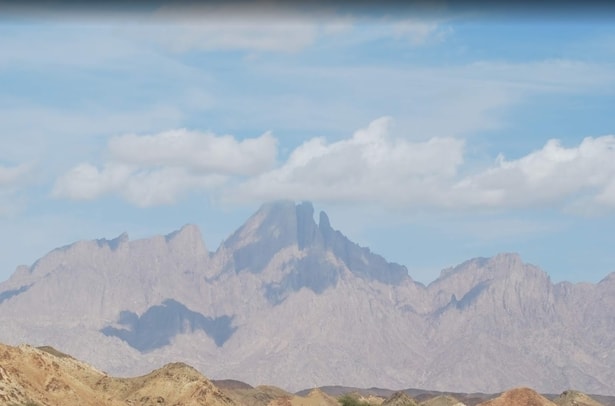
The entire Tabuk region is a veritable treasure of stunning mountain ranges, canyons, volcanoes that housed people and civilisations steeped in history that began more than 90,000 years ago.
A. The most impressive mountain ranges include:
- The Grand Canyon at Al Shaq
- Jebal Al Lawz (Almond Mountain)
- Jabal Hisma (Hisma Mountain)
- Sarawat Mountain Range (Madinah- Tabuk)
The Grand Canyon at Al Shaq
(map) 28.0651503, 35.9126698
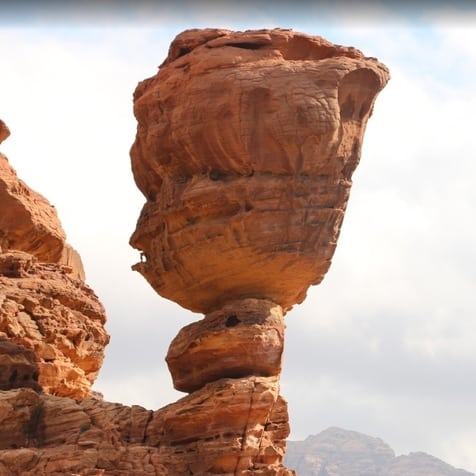
The Al Shaq (The Split) Grand Canyon is a 4.5-hour drive north from Umluj. Head north along the Red Sea coast to the city of Duba. Then, take a right and drive up the windy mountain road to Shigry. The Al Shaq Canyon is 3 kilometres after Shigry on your left-hand side after the Bronze Age 3rd millennium stone circles and ancient tombs.
Here you begin to drive off road onto a number of tracks until you meet the northern end of the Shaq Canyon. From here you will be looking down into the canyon. You will see overhang viewing areas to take pictures of this amazingly wide and awe-inspiring canyon.
From here see if you can spot the mushroom-shaped rock down in the valley. It is a good idea to have sunglasses, binoculars, and a powerful zoom camera.
Jebal Al Lawz (Almond Mountain) 2,850 m (8460ft)
28°39′15″N 35°18′21″E
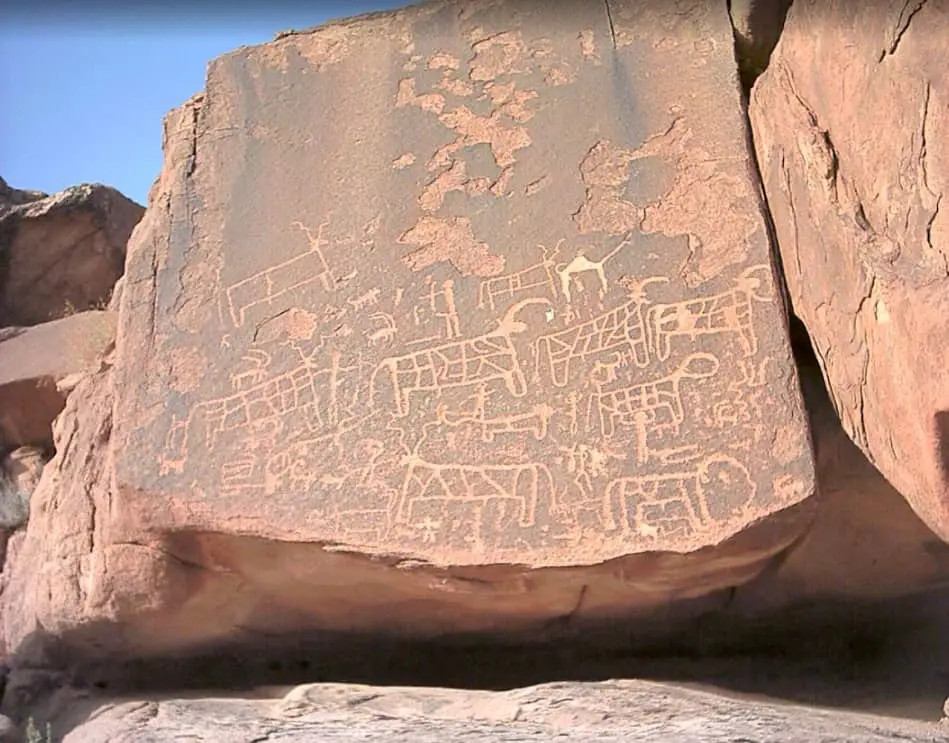
After visiting Al Shaq Canyon from Shigry drive north for 1.5 hours to Tabuk. Continue north to Bir Ibn Hirmas and turn left and head west towards Jabal Al Lawz. The journey takes up to 4 hours.
Few know it, but Jabal Al Lawz is considered by some scholars to be Mount Sinai, the mountain where God gave Prophet Moses (AS) The Ten Commandments as described in the Book of Deuteronomy in the Old Testament. The point is contentious though. Some regard Jabal Maqla (The Burnt Mountain) 2,326 m (7,631 ft) as Mont Sinai.
28.59674°N 35.33549°E.
Jebel Al Lawz is about a two-hour drive west from the city of Tabuk. It is located in the NorthWest of Saudi Arabia close to the Jordanian border. Almond describes the colour of the light-coloured, calc-alkaline granite of its peak.
B. Areas of historical significance include:
Maidan Saleh- Al Hijr
- Al Ula
- Mahajah
- Maqna- Bir Sa’idani
- Maydan-Mugha’ir Shu’ayb
- Tayeb Ism
- Tayma
C. Areas of exceptional natural beauty include:
- Al Disah
- Al Shigry
- Sarawat Mountain Range
Al Disah Oasis
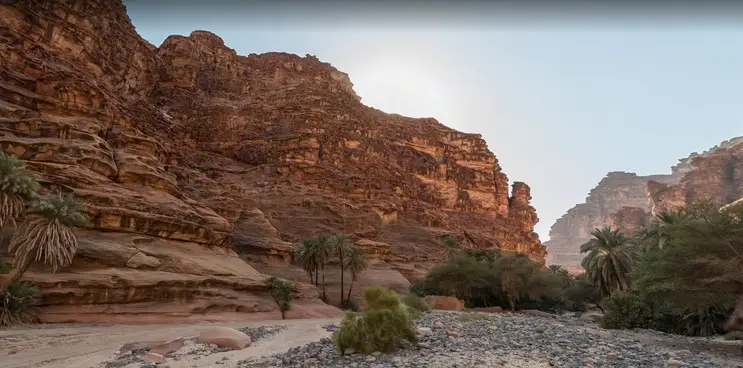
Al Disah is a charming treasure of an oasis lying in a stretch of sand locked in by towering sandstone escarpments and breathtaking peaks.
It is a 4-hour drive north of Umluj. Turn right onto the B761 before you reach the city of Duba and head East over the mountain range for two hours. Leave the town of Shuwaq on your right crossing over the main road B756. Continue East over the great sand plain until you reach Disah.
It is a magical looking place. To reach there drive up the Wadi Qirqir river bed, lined with gushing fresh water springs and palm trees on each side until you reach a deep gorge area with high cliffs on each side. Dry in the summer, but usually gushing fresh water runs down its centre in the colder months.
Now get out of the car and take time to explore. Climb up the conical sandstone rock cliff faces rising up above you. Discover the ancient tombs hidden high up the cliff walls and witness the ancient petroglyphic artwork of human and animal figures (camel, ostrich and antelope) known to be thousands of years old. It is delightful.
Further, into the village, there is a Nabataean tomb which is sometimes open and you can visit it. Further north out of Disah about 115km is the ruins of the ancient Nabatean Temple Rawafah Temple built in 166 BC in an area previously annexed by the Roman Emperor Marcus Aurelius and built in his honour.
8. Ancient Archaeological Treasures
The Tabuk region around Umluj boasts a number of important historical sites and a wealth of antiquities such as petroglyphs (wall paintings), inscriptions, ancient tombs, forts, palaces.
There are also more modern artefacts from the Syrian-Egyptian Islamic pilgrimage routes and the vestiges of the Hejaz Railway line.
Tabuk also lays claim to the discovery of the oldest human fossil of the remains of an ancient 85,000-year-old man. He was found in the Nefud desert on the outskirts of Tabuk. Caves, graves, rock art and relics of the presence of ancient civilizations are abundant in Tabuk and other regions and all are within easy reach of Umluj.
Recent searches uncovered an elephant carpal bone in Tayma, an ancient human settlement of the 15th century. These and many other important historical sites are testimony the Saudi kingdom’s status as the cradle of the human civilisations.
Notable Ancient Sites include:
- Al Ula
- Mada’in Saleh
- Tayeb Ism
- Tayma
- Wadi Qaraqir
- Aydan Cave homes
- Disah
- Al Ula
- Hadaj Well in Tayma
- Rock Inscriptions in Wadi Dam
- Tabuk Castle
- Ain Sukrah
Al Ula

26°31’18.6″N 38°02’06.8″E
One of the jewels of the ancient civilizations in Saudi Arabia is Al Ula. Of interest to tourists and visitors is the old walled town called Al Ula. Currently, it is called Al Deerah Heritage Village. It sits next to the existing town which has a current population of about 6,000 people.
It was ideally placed on a fertile oasis and on the ‘Incense Road’ a prosperous trading route for merchants carrying luxury items, spices and silk through the Arabian peninsula to and from and Yemen, Egypt and India.
Al Ula got established in the 6th century BC by the tribes of Lihyanites (Dedanites). However, there is evidence of more ancient people in the Bronze Age (Tumulus) Mound Tombs 2,000 BC which can be seen in the region.
The Lihyans ruled the area from the 5th to the 2nd century BC. The Dedanites occupied the area in the 6th and 7th century BC. They developed agriculture and prospered in trade.
About 500 BC a Babylonian King Nabonidus invaded and conquered the old Tabuk region subjugating Tayma, Dedan and Yathrib (Old Medinah).
The (Lihyan) Nabataean people inhabited the region until Petra (currently Jordan) their capital city was annexed by the Roman empire in 106 AD.
The Nabataeans then moved their base of power to Hegra (Mada’in Saleh) 22 kilometres north of Al Ula. They also prospered from the Incense Trade and made spectacular wall carvings those which can be seen today.
In the 19th century, the Ottomans built a railway to connect Damascus with the Madinah. Along the way, there was a station in Mada’in Saleh and Al Ula. A line was built to the west side of Al Khuraybah close to the ruins of another ancient Dedanite and Lihyanite site still existing today.
How to get there Umluj- Al Ula (305 km -3.5 hours drive)
Head out of Umluj via the King Khalid roundabout and onto the King Saud Road 888. Drive straight for two hours till you reach the village of Al Feraa.
Continue and when you get to the town of Al-Ais take route 328 heading north. You will pass through a number of towns along the way, Al Qrash, Al Muarbala, Abu Haramel, Masadar, Mogyara and finally you will reach Al Ula.
In Al Ula town, you will find everything you need; parking, gas stations, accommodation, shops, restaurants, a Heritage Visitor Centre.
The Heritage Village, which is what you came to see, is the northern part of the town. It is open 24/7 and free to enter.
Mada’in Saleh

In 2008, the United Nations made ‘Al Hijr’ or Mada’in Saleh a World Heritage site- a first for Saudi Arabia. It’s a bunch of huge sandstone rocks with ancient tombs dug out in them and located in the middle of a desert miles from nowhere. Turns out, it is a really important place.
It was known to have been inhabited starting more than 5,000 years. The first was the tribe of Thamud written about in the Quran. They lived there about 3,000 BC.
From 3,000 to 2,000 BCE, the Lihyan people settled and thrived very well indeed. They didn’t have Facebook back then so these people drew pictures and words (Lihyanite script) inside the caves which amazingly survives until today.
These people were good at growing crops making good use of the easily accessible freshwater wells. They also did good business with the traders who passed by Al Hijr travelling back and forth from North and South Arabia selling their wares.
Then, by 100 CE the Nabataean tribes had truly taken over the area under King Aretas IV Philopatris (Harith IV) 9 BCE – 40 CE and made Al Hijr its second capital city after the well known Petra site. (Jordan)
The Nabataeans also did well and the city and urban areas grew large. They also developed excellent oasis agriculture exploiting the 130 rainwater wells they helped to develop.

They also got good at the business selling incense, myrrh and spices. Al Hijr was the hub of the overland trade route coming from the Red Sea Port of Egra Kome and the traders were constantly travelling North-South and stopping by the city.
In 106 CE however, Rome annexed the Nabataean kingdom and it became a Roman province. Then, traders started using boats on the Red Sea to move their goods back and forth. Because of this, overland traders ceased moving their wares along the caravan routes which crossed at Al Hjir and it began to fall into decline. Also, later desertification slowly buried the urban areas until it eventually became abandoned.
Al Hijr remained abandoned after the Romans had left. Until 1500s CE, it was known only as a supply station for travellers and Islamic pilgrims to Mecca.
For more than 1,500 years it only gets a mention here and there. Notably, the Moroccan world adventurer Ibn Battuta describes it in his travel logs in the 14th century.
In 1517, the Ottoman Turks (Mamluks) annexed Western Arabia and for the next two hundred years, Turkish travellers and religious pilgrims mention Al Hijr from time to time in their writings.
Then, in 1744 and 1757, the Turks built a castle fort and a well. They use it as a stopover to service overland Muslim pilgrims with dates and fruits and as a form of protection.
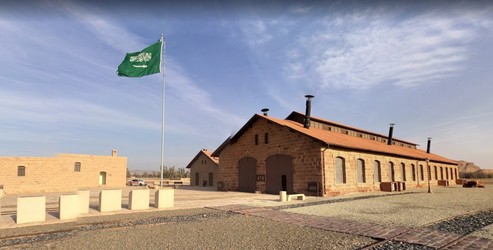
For another hundred years, overland pilgrims passed by Al Hijr via the fort. To make it easier for them, the Ottoman Sultan Abdul Hamid II ordered a railway to be built. (1901-08) as a way of connecting Damascus/Jerusalem with Madina and Mecca and to establish the Ottoman power.
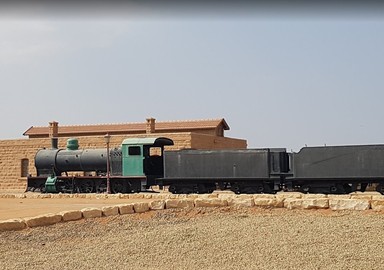
The Turks built a railway station north of Al Hijr, locomotive repair shops and staff accommodations. By 1917, local Bedouins had destroyed it. After the 1960s, the railway station was restored and today it has some limited use and can still be seen.
The last known human activity at Al Hijr was the settling of Bedouin tribes in the 1970s because of the existing freshwater wells. However, they were moved further North when Al Hijr status as an important archaeological site became known.
Relics
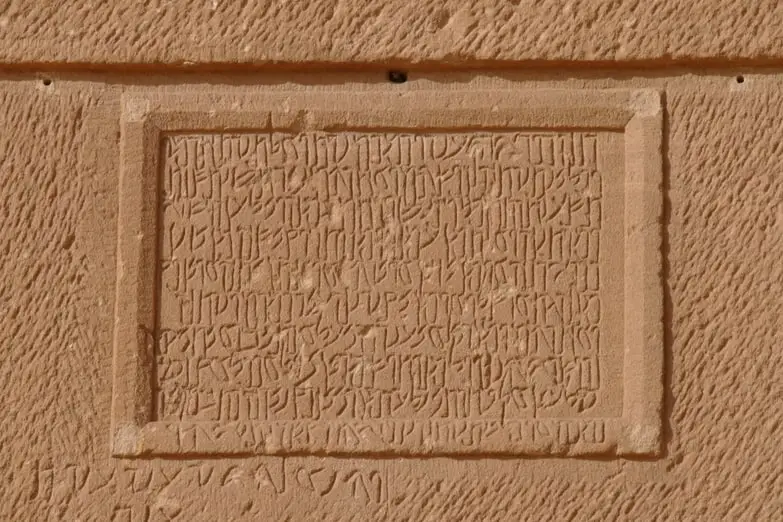
Abrani Language written in Nabataean Alphabet Above Tombs
Al Hijr or Mada’in Saleh as it is known today is the biggest and the best and regarded as the ‘capital’ of all Saudi Arabia’s 4,000 archaeological monuments. It is incredibly well preserved and offers a full picture of the Nabataean civilization.
The four areas of the ornamental necropolis facades mirror that which is found in the Petra site. Information on the facades tells us about who was buried at the site, their status and position. The motif decorative styles show us additional artistic influences from Assyria, Phoenicia and Hellenistic Alexandria (Egypt)
And, the relics you see here are typical of others found elsewhere in the Tabuk region. They are ancient bronze age burial mounds, 131 Nabataean rock-cut tombs, inscriptions, cave drawings of humans and animals and over 2,000 non-monumental burial sites spread out over the 13.4-kilometre site.
9. Vast Nature Reserves
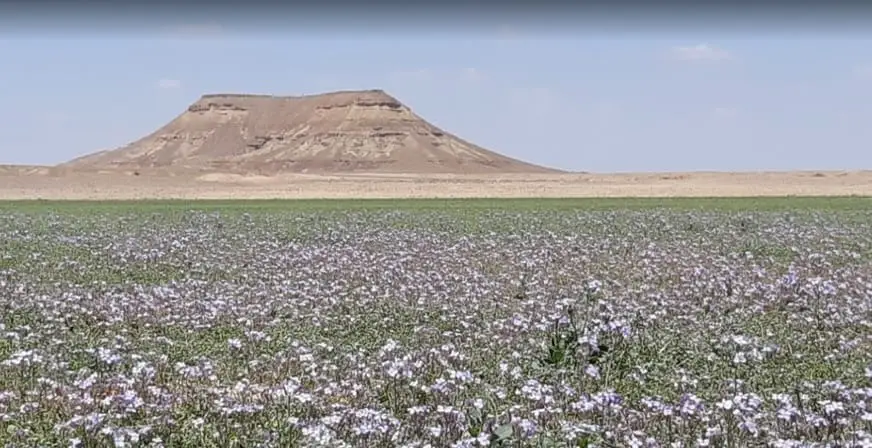
North of Umluj large expanses of land and mountainous territory have been given to provide sanctuary for wildlife and migratory birds. They are a magnet for nature lovers and bird spotters.
They include:
- Al Tubaiq Nature Reserve
- Al Khanafa Wildlife Sanctuary
- Harrat al Harrah Conservation
- Tabuk Wetlands
10. Amazing Migratory Birds
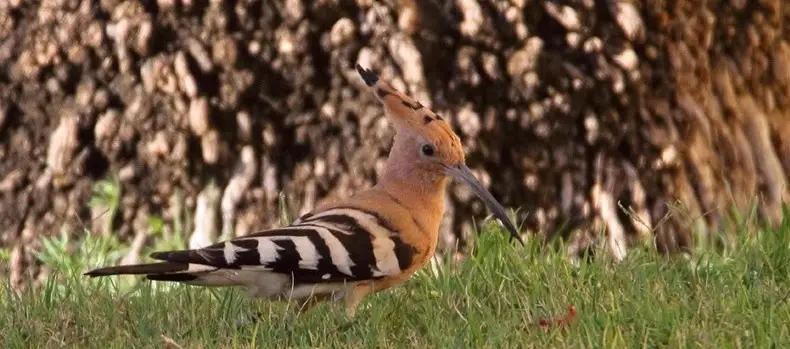
Dedicated bird spotters have accounted for the sightings of 511 species of birds in Saudi Arabia, 10 of which are introduced. In Tabuk, migratory birds can be seen in the reserves and wetland areas. (MFS)
The most common sights are of Barn Swallows and Bee-eaters. Also seen are the Graceful Prinias and the Eastern Olivaceous Warbler an uncommon summer breeder.
You can also see:
- Eurasian Bittern
- White-Tailed Lapwing
- Cranes and Rails
- Flamingoes
- Kingfishers
The most common wintering species spotted include:
- Montagues Harrier
- Pallid Harrier
- Marsh Harrier
- Long Legged Buzzard
- Cream Coloured Courser
- Crested Lark
- Eurasian Hoopoe

11. Health Benefits
Travel broadens the mind and it also provides untold health benefits. This is especially true when you take a holiday in ‘Umluj’ and begin reaping the rewards. It is a stress-free experience filled with unimaginable beauty, expanse and endless possibility.
The benefits of a holiday ‘Umluj’ on the body and mind are that it:
- Improves Memory
- Stimulates Brain Growth
- Relieves Stress
- Heightens Sensitivity
- Fights Insomnia
The peace and tranquillity you will experience in Umluj will help you get the best nights of sleep. You get away from the normal hustle and bustle, the noise and the racket, have a quiet, relaxing environment to enjoy a night of deep restful sleep.
It also improves the relaxation response, lightens your mood and calms the nerves. calmer nervous system. You will feel refreshed, mentally alert and experience a renewed sense of focus.
12. Sustainable Tourism Untouched Beauty
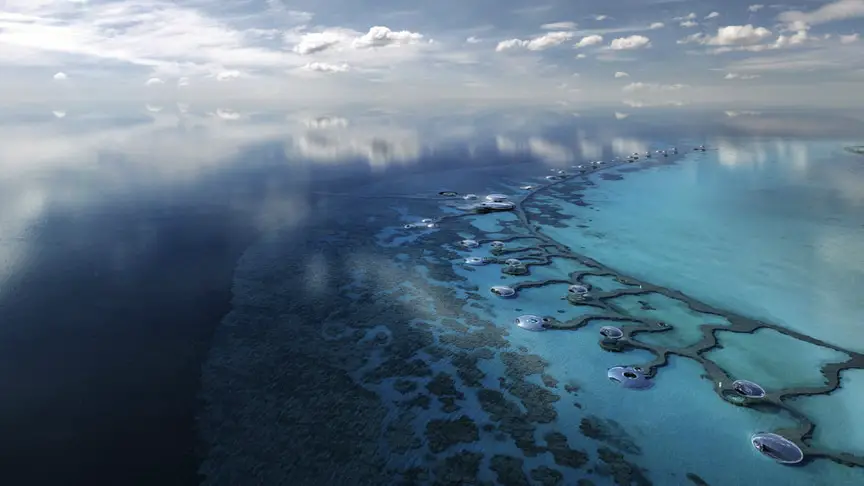
Visiting ‘Umluj’ is also an opportunity for you to participate in sustainable tourism. You can enjoy the breathtaking environment and at the same time give back in positive ways.
Tourists impact the environment, the community and the economy. Your contribution will be to participate in without harming the Red Sea environment, damaging ancient sites and artefacts nor exploiting local culture.
The Ministry of Tourism’s top priority for the region in its plan to create leisure and touristic facilities in ‘Umluj’ for the Red Sea Project is strictly based on sustainable development principles that protect rather than harm the environment.
New technologies will prioritize renewable energy alternatives, clean transportation, waste management and water basin conservation.
Building and construction will also be based on vital water and wildlife conservation considerations with the aim of causing the least harm possible whilst supporting the sustainable development of the Red Sea.
Your visit will help support sustainable business and communities. You will help preserve rather than destroy the natural beauties of the Red Sea islands archipelagos and the ancient sites.
You will help create a better living environment for local people and improve the local economy. You will help maintain a beautiful environment for future generations to enjoy and feel the satisfaction of being involved in sustainable tourist activities.
13. Very Safe for You and Your Family

Other than concerns over driving safety, I feel very safe being in Saudi society and have no concerns for either the safety of my wife or my children.
In fact, other expats commenting on safety issues related to their lives in Saudi Arabia say that they feel safer here than in their own countries. In spite of contrary media reports, this is especially true for women.
Instances of violence and crime against your person are almost non-existent. Laws are in place to protect the rights of both Saudi nationals and expats especially including visitors who come to the kingdom for short periods of time.
Muggings, pickpocketing, and other serious personal violations which are very common occurrences in European tourist areas rarely take place in the Saudi kingdom. Your visit to Umluj is guaranteed to be safe and event-free one.
14. Low-Cost Destinations
Saudi Arabian tourism has just begun. There are few if any, package type holidays available and the tourism which does exist is mostly domestic and religious. This means that there are great deals available in hotels and resorts right across the country. Prices are low relative to Western standards and good holiday deals are plentiful.
Additionally, like most beaches in the Kingdom, the beaches and resorts on the Saudi Red Sea are virtually empty all year round. In spite of its beauty and the great things it has to offer, Umluj is very quiet indeed. Most tourism in the region takes place during the summer holidays months.
Only when the Red Sea project is finally established in 2020 will the problems of crowding, high prices and pressure on tourist services start occurring. Until that time comes, you should take advantage of the fact that seaside resorts hugely are underused.
15. Accessible and Well Connected

Jeddah new and modern international airports handling thousands of foreign visitors daily mostly for the religious Umrah pilgrimage to Mecca.
Moving from city to city is easy. Car hire companies charge 80-100 SR per day and of course, gas prices are very, very low. The highways to Yanbu, Medinah and Tabuk are fast and in excellent condition. It take nearly 5 hours to drive to Umluj.
There are also three or four flights daily from Jeddah to Yanbu which is the closest major city to Umluj.
Alternatively, a taxis service is available and can be shared to keep the cost low. Buses operated by the national SAPTCO company from Jeddah airport also offer city to city services and are cheap, very convenient although a little slow.
The 2018 new train service from Mecca-Jeddah -Medinah called the ‘Al Haramain High-Speed Train’ takes three hours to Madinah and is well connected for Umluj.
Summary
I have outlined in some detail 15 of the best reasons why you should consider a holiday in the jewel that is Umluj. It is the ideal location for an outstandingly beautiful, low-cost seaside vacation. You can combine that with visits to awe-inspiring canyons, mountains and volcanoes, idyllic beauty spots and interesting remote archaeological sites. Consider this next time you plan your next vacation.
Recommendations
Boat Rentals in Umluj
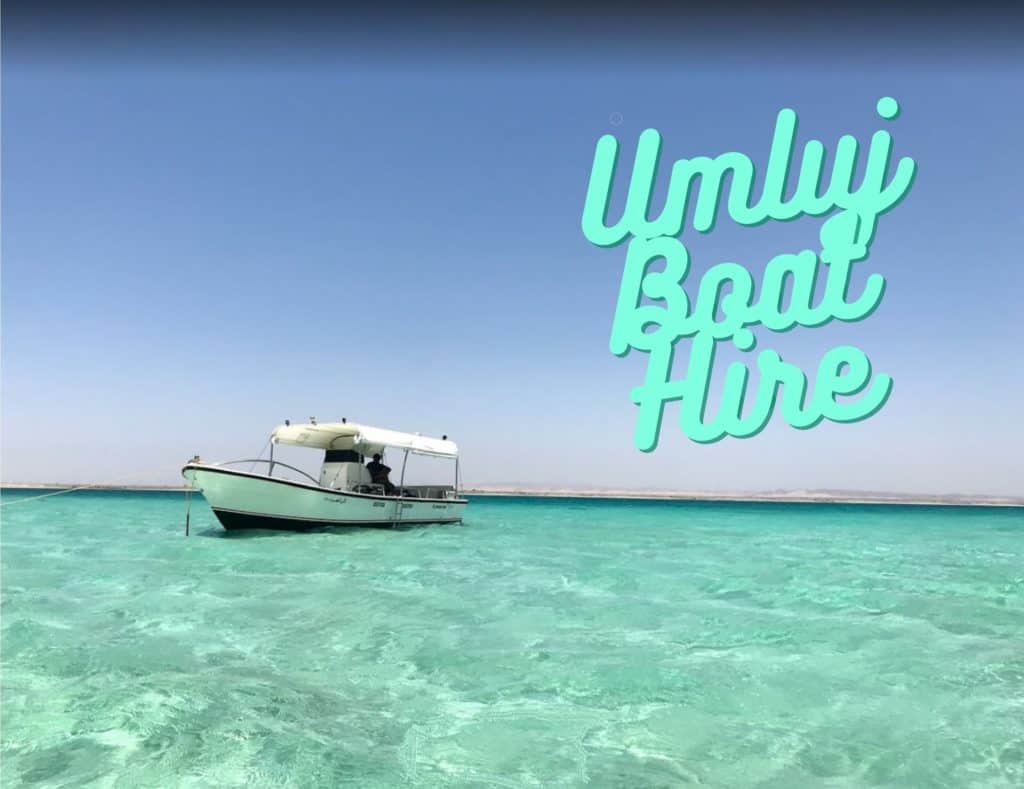
At the port in Umluj, you will find many boats for hire that can take you to the islands and to shallow swimming and fishing areas. Currently, the islands are off-limits and cannot be entered.
You can hire boats on an hourly basis for as little as 200 SR per hour rising to 400 SR. As always, I recommend you find a group and pay for 2 + hours and share the cost.
You will need to show your Iqama and/or passport with a Tourist visa. The port authorities will make a record of it before you leave the port and as you return.
Here are six recommended boats hire and its best to book in advance.
- Khalid Abu Waleed Highly recommended boat hire. His prices are good, and he offers a good boat tour of the islands and the swimming venues. Contact: 050537 9308
- Blue Boat Hire– Contact 0556540239
- Al Basil Boat Trips- Contact: 0509939187 (Highly Recommended)
- Maris Umluj Boat Trips Sultan Al Haniya 050131 0661 Atiq Maatouk 050 3551 (Good prices)
- Maris Umluj Al Hara Maeem 050 527 6398 (Good trips and pries)
- Boat for Hire Sea Trips Rafaf Al Habib 055 202 5510
Google Maps Location for Heera Cornish and Boat Rentals
Diving Schools in Umluj

Scuba diving is a great fun activity in and around Umluj. Diving courses are on offer and you can go join as a beginner. If you are a qualified diver, you can join in and dive with them.
- Mustapha Mohammed (SSI Scuba School International
 ) To inquire about prices and times Contact: 00966 (0) 54 702 2488 or by Email: dive.center@yahoo.com
) To inquire about prices and times Contact: 00966 (0) 54 702 2488 or by Email: dive.center@yahoo.com - Dive Center Umluj
 SSI & PADi Center 054 702 2488
SSI & PADi Center 054 702 2488
